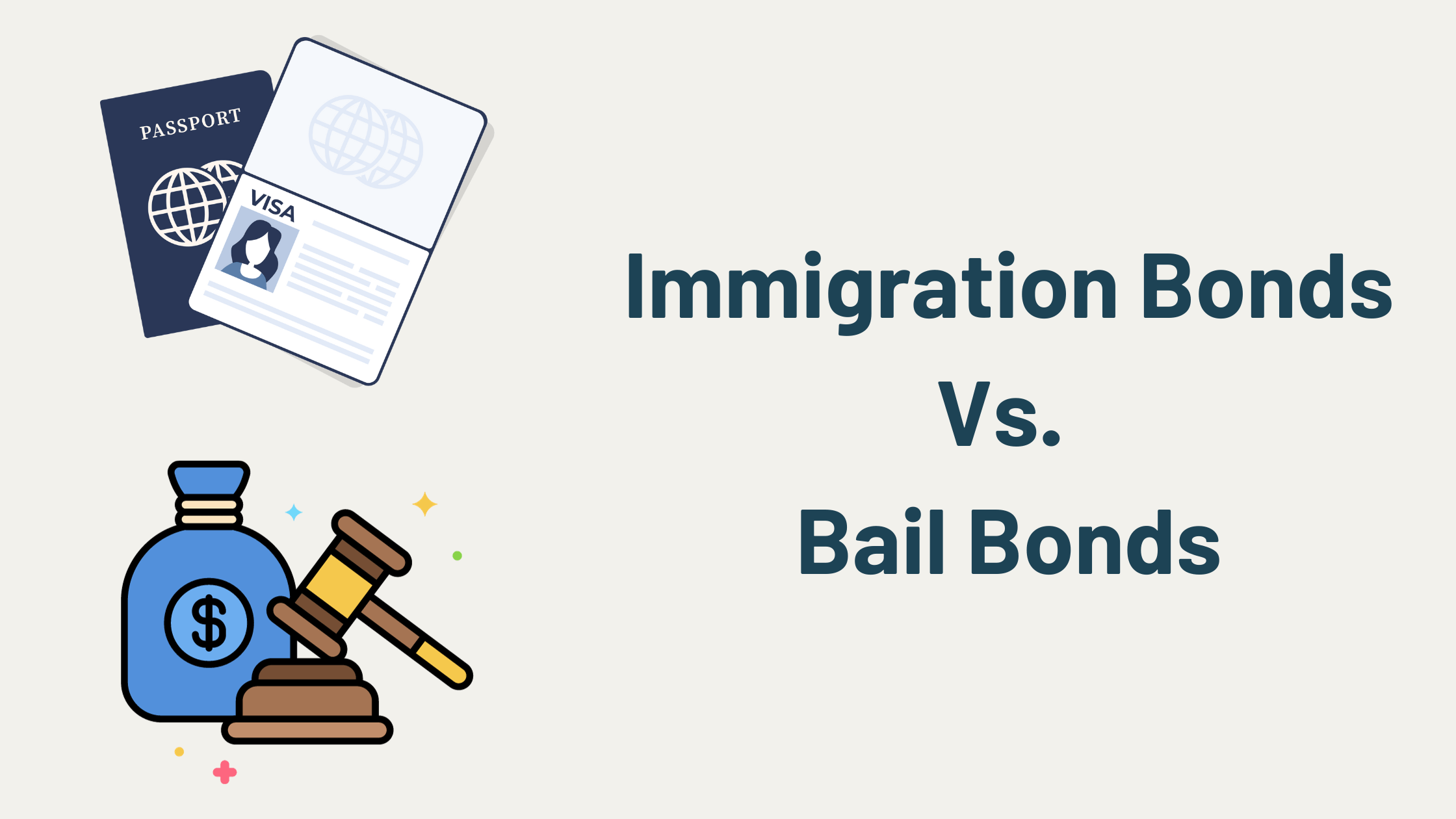
Immigration Bonds vs. Bail Bonds
It may be confusing to navigate the legal systems’ intricacies, particularly when it comes to immigration and bond issues. You will have a thorough comprehension of two important ideas—bail bonds and immigration bonds—through this in-depth investigation. Despite their frequent interchangeability, these phrases have different meanings in the legal domain. Get ready to explore the complexities of various financial products, each intended for certain uses and situations.
Immigration Bonds: Securing Release for Detained Immigrants
A financial guarantee known as an immigration bond, is placed between the government and the person being held for immigration-related reasons. An immigration judge decides whether an immigrant is eligible for bail while they are in custody. If approved, an immigration bond frees the person from custody as long as they follow the rules that the court specifies. It’s critical to realize that this kind of bond is unrelated to criminal activity and only applies to immigration applications. In essence, US immigration bonds provide a means for people to safeguard their freedom. While their immigration case is ongoing, bonds guarantee their ability to stay with their families, carry on with their employment or education, and comply with the requirements of the law.
Bail Bonds: Facilitating Release in Criminal Cases
On the other hand, bail bonds are relevant in the context of criminal law. When someone is arrested for a crime, they could be given bail, which is an amount of money decided upon by the court that permits their temporary release until the end of the trial. Bail is a way to guarantee that the offender will show up for all necessary court appearances. Many individuals, meanwhile, are unable to afford to pay the whole bail fee in advance. Bail bonds are used in this situation. An agreement wherein a bail bondsman guarantees the entire bail sum in the event that the accused fails to appear in court on behalf of the accused is known as a bail bond.
Immigration Bond Process: From Application to Release
Getting an immigration bond requires a few different stages. Initially, the Immigration and Customs Enforcement (ICE) office receives an application for bail from the inmate or their attorney. Then, in order to decide whether to give bail, ICE evaluates the person’s flight risk, criminal history, and connections to the community. If accepted, the bail sum is predetermined, and a friend or family member may employ a bond agency with a license or pay the bond directly to ICE. The inmate is freed awaiting their immigration court hearings when the bail has been paid. For bail eligibility to remain in place, all court-ordered requirements must be followed.
Bail Bond Process: Navigating the Legal Landscape
Contacting a certified bail bond agent is the first step in obtaining a bail bond in a criminal prosecution. In order to secure the bond, the bondsman usually needs collateral, such as real estate or other valuables. A non-refundable charge, often equal to 10% to 15% of the whole bail amount, is paid to the bondsman by the defendant or their family. After the bondsman posts the whole bail sum, the defendant is free to leave detention. The defendant must show up for all scheduled court appearances; if not, the bondsman may use a bounty hunter to find the criminal and bring him back to justice. The bail bond expires when the case is settled and the collateral is given back to the original donor if the offender complies with all court orders.
Risks and Responsibilities: Understanding the Terms
Financial risks and obligations are included in both bail bonds and immigration. Immigration bonds are forfeited, meaning the person who paid the bail forfeits the whole sum, if the prisoner does not show up for court appearances. When a defendant posts bail, the bondsman is liable for the whole bail sum in the event that the defendant fails to appear in court. Collateral offered by the defendant or their relatives may be forfeited as a result of this. Before agreeing to post a bond, all parties must understand these risks and duties completely.
Differences in Eligibility: Who Qualifies for Bonds?
Certain conditions and legal considerations affect who is eligible for bail bonds and immigration bonds. Immigration courts use a number of considerations, including criminal background, community links, and flight risk, when determining whether to give bail to an immigrant. Bail eligibility in criminal cases is based on the seriousness of the crime, the defendant’s prior criminal history, and the probability of their court appearance. While many people, particularly those charged with major offenses, are automatically eligible for bail, others may not be granted any at all.
Conclusion
In conclusion, even though both bail bonds and immigration bonds include making financial agreements to ensure freedom, they serve different objectives and function in separate legal domains. Knowing your alternatives while dealing with legal processes may be crucial, whether you’re facing criminal accusations or navigating the intricacies of immigration detention.